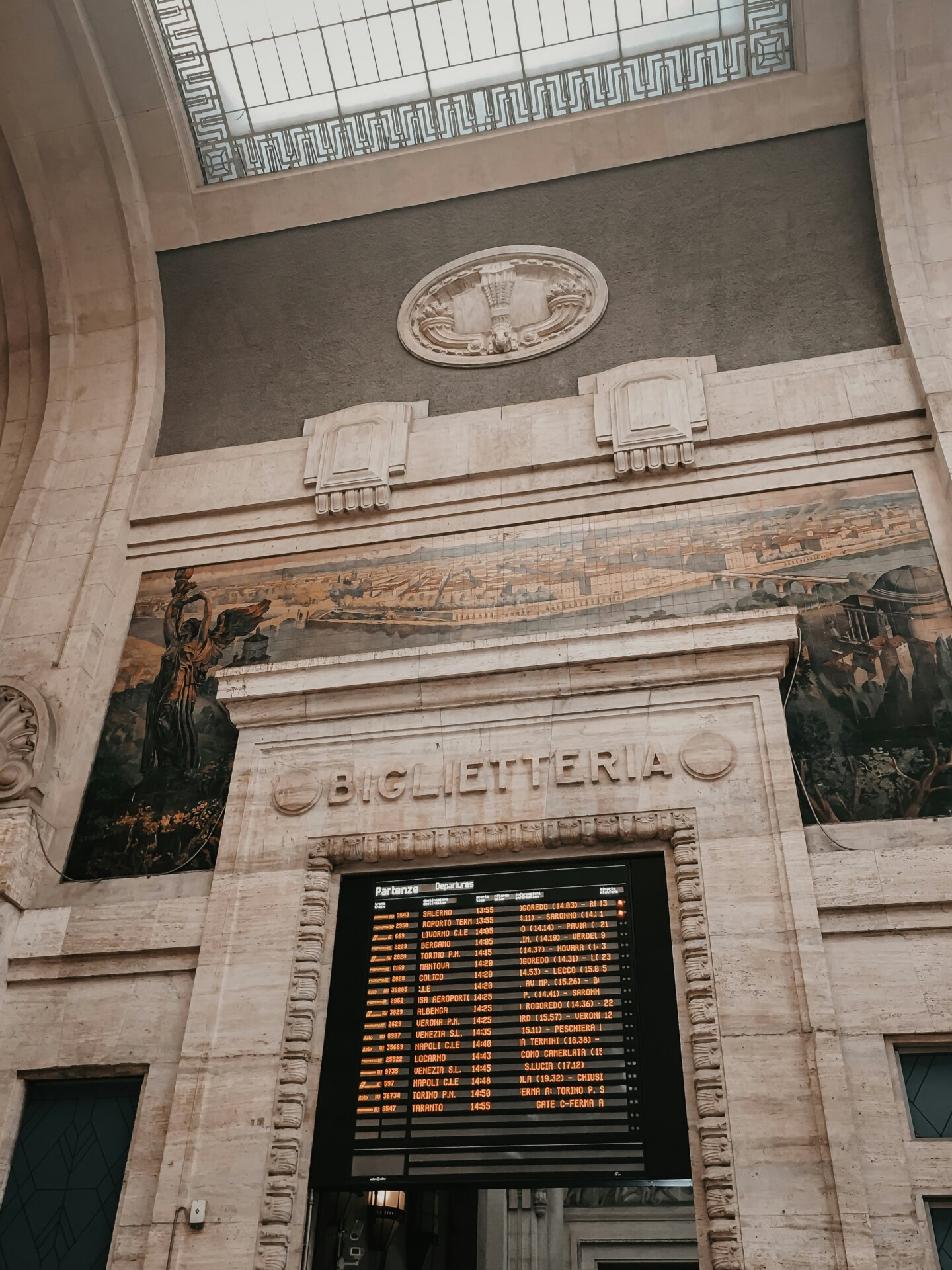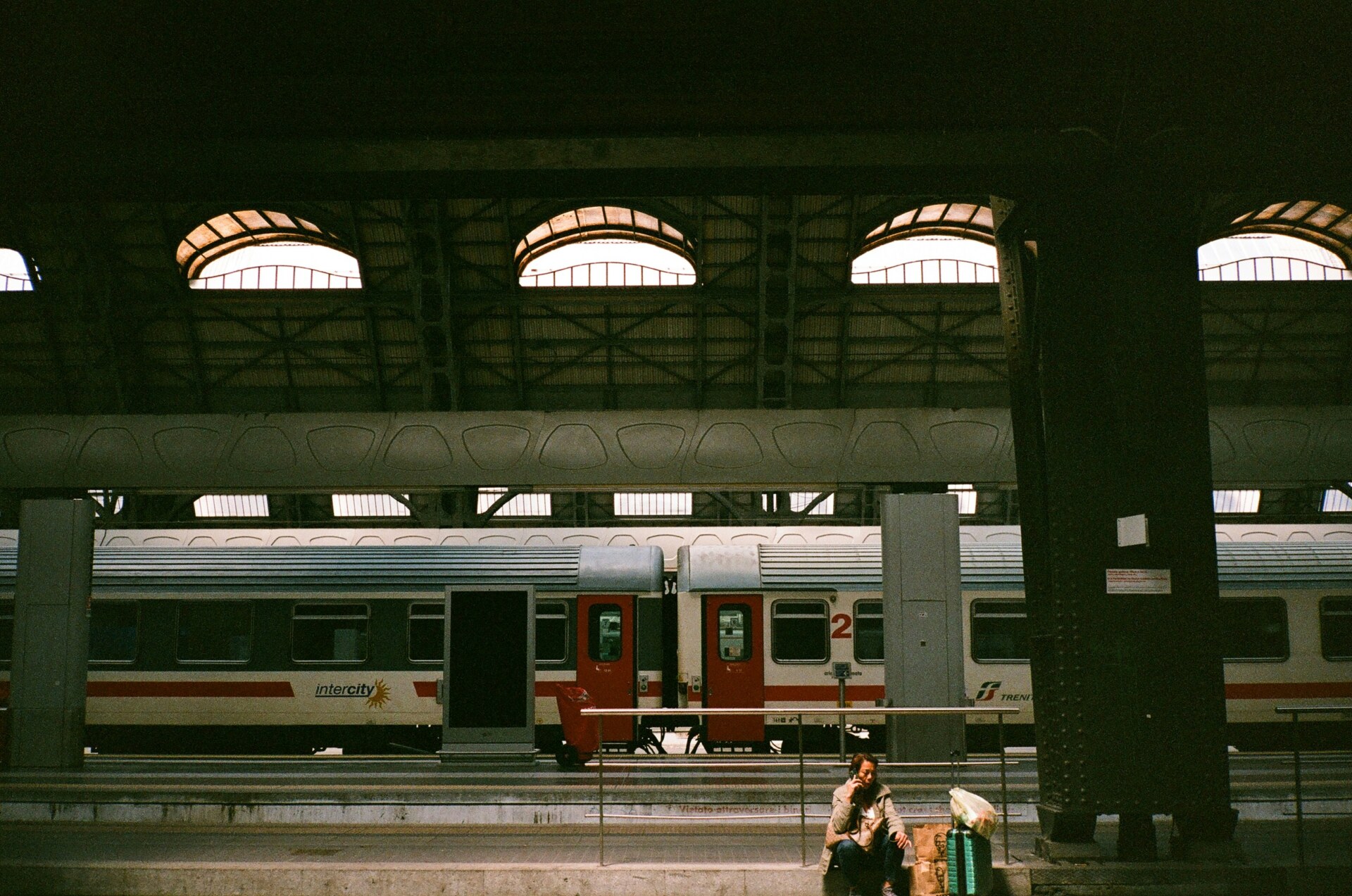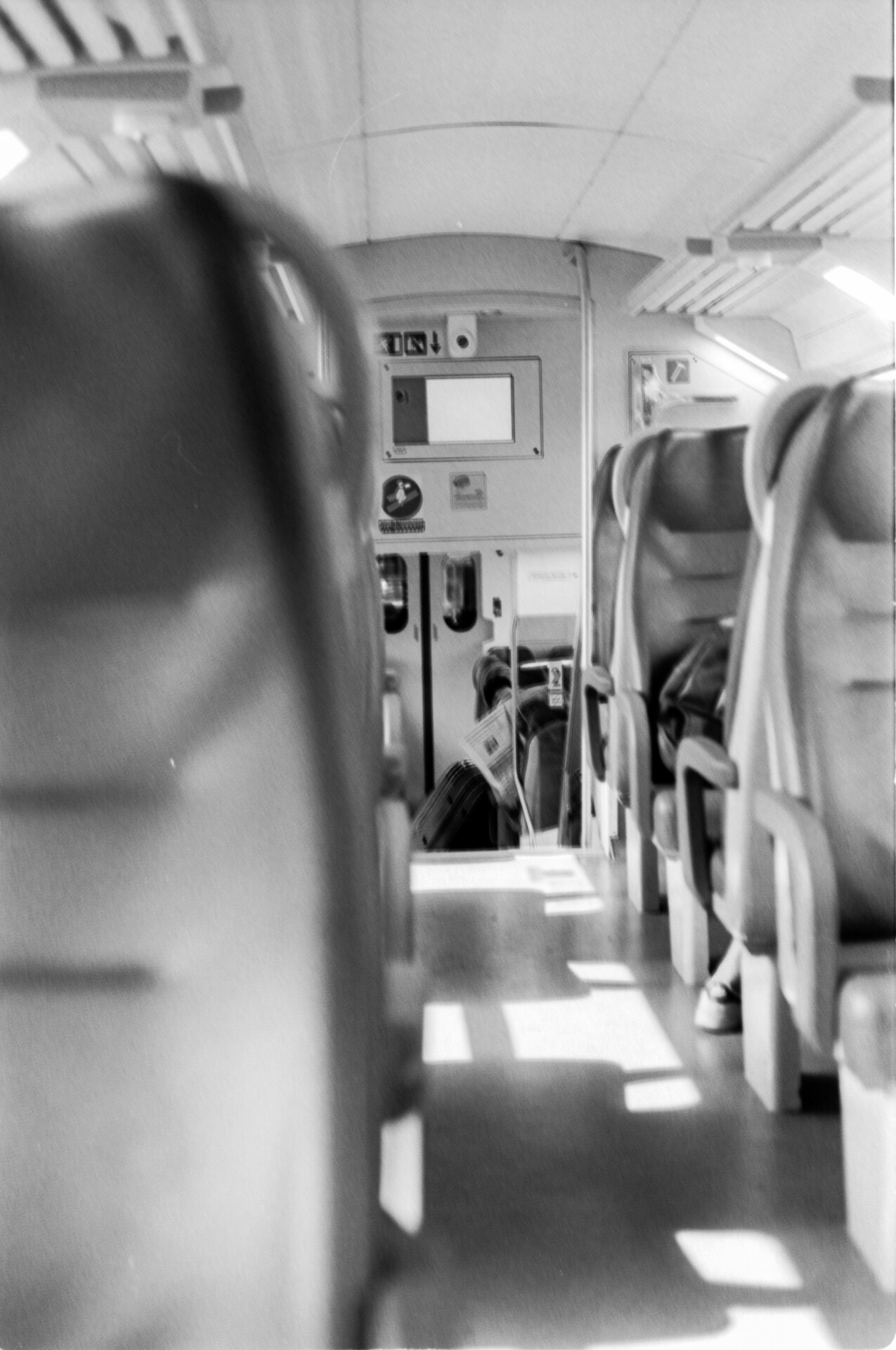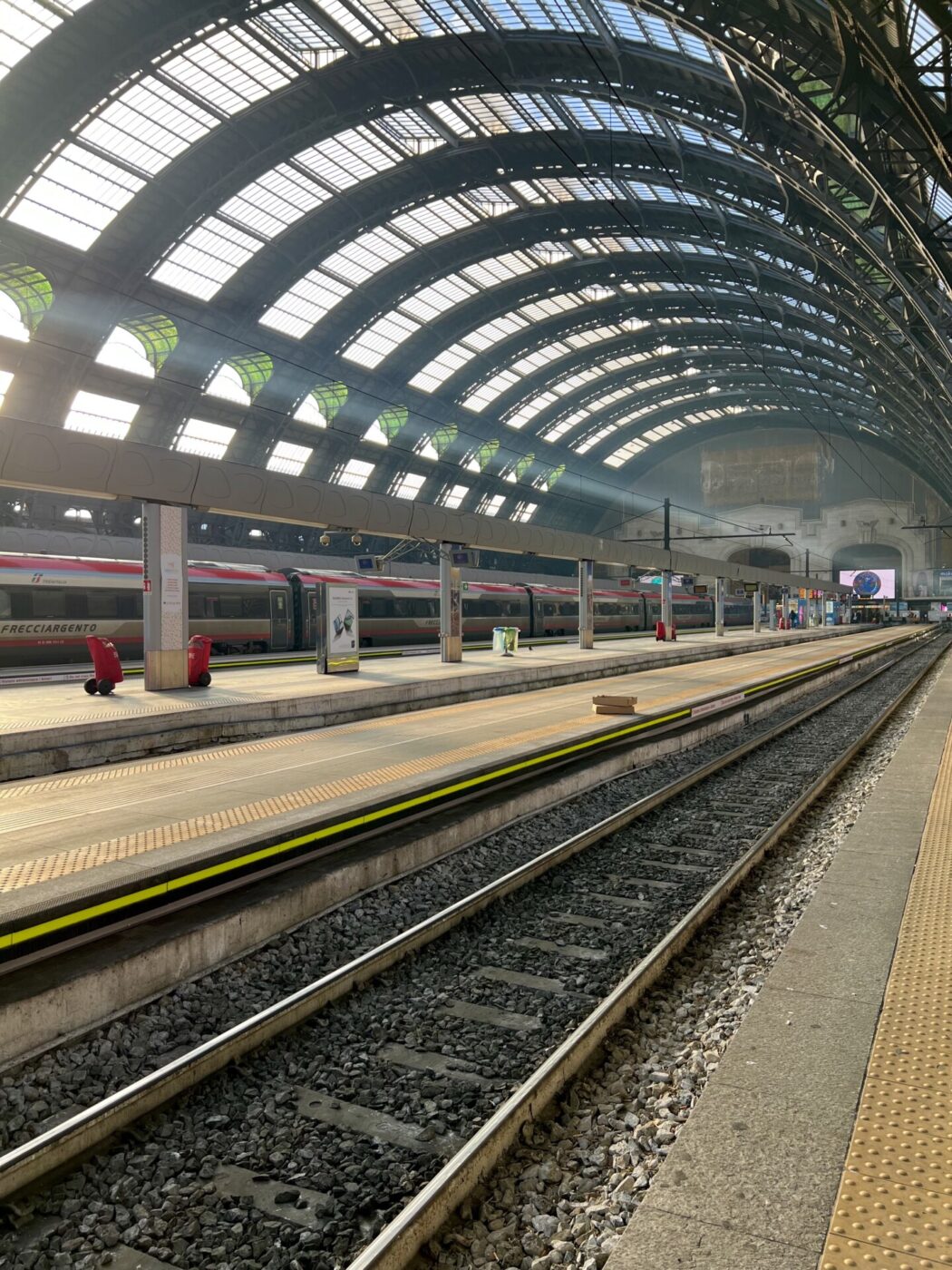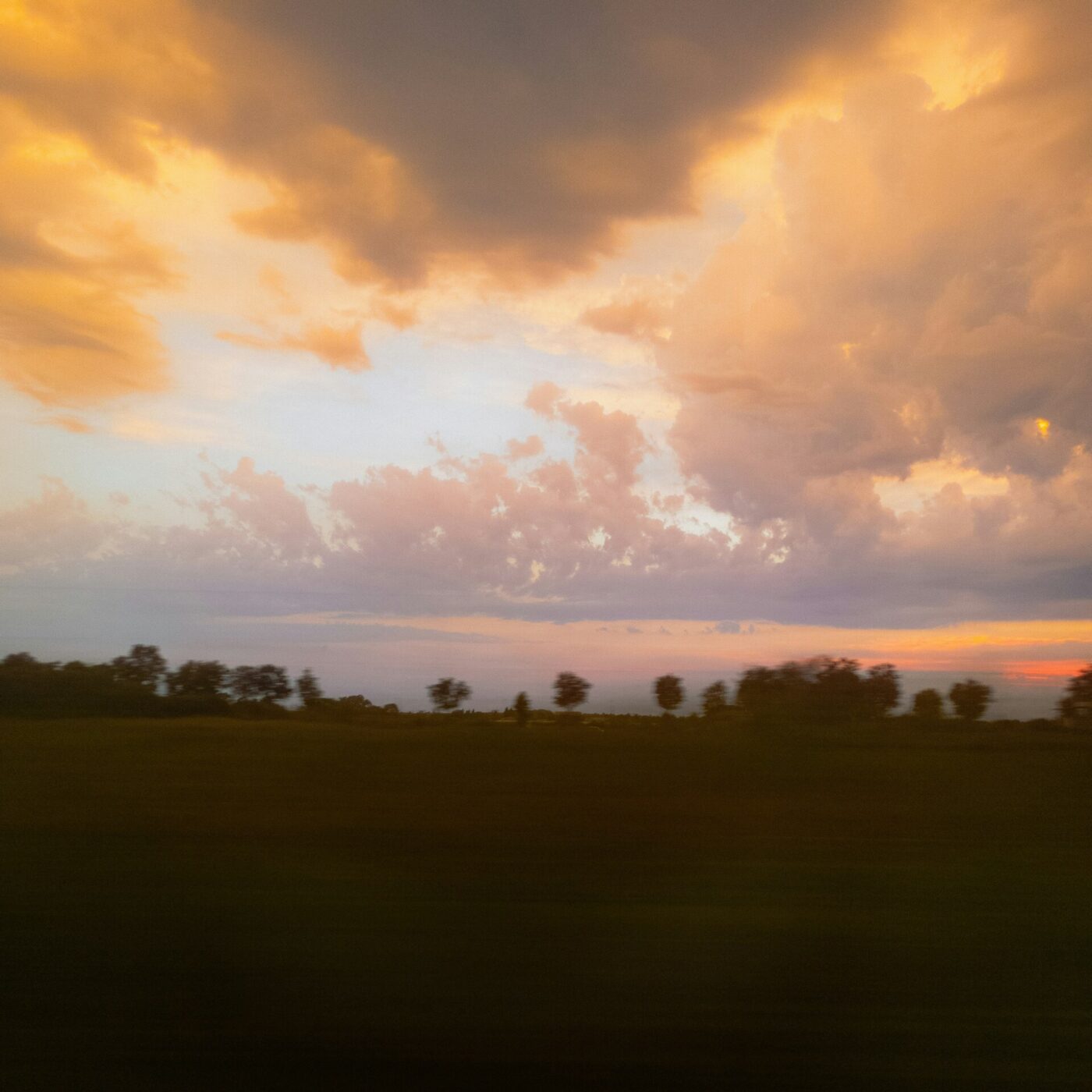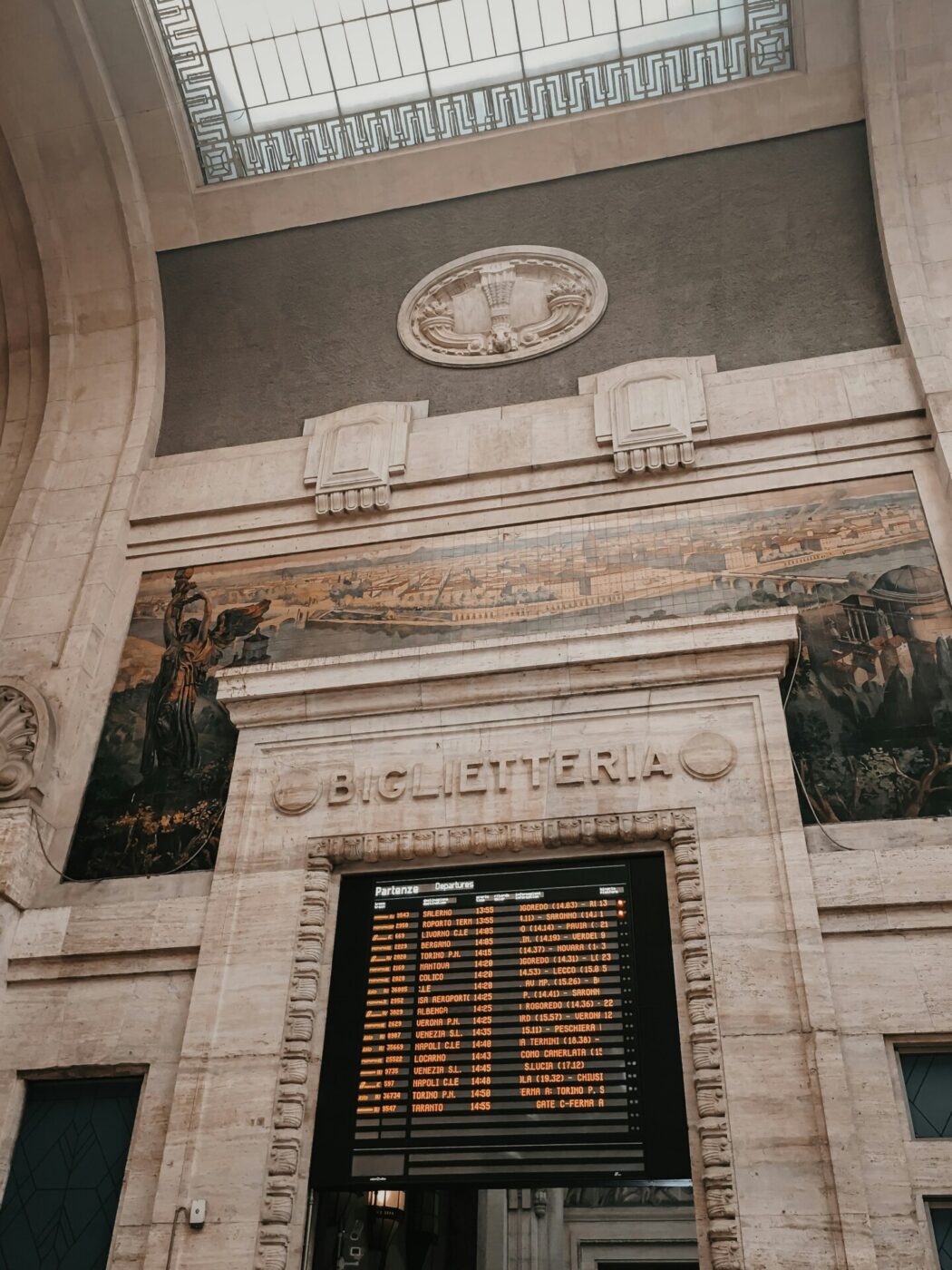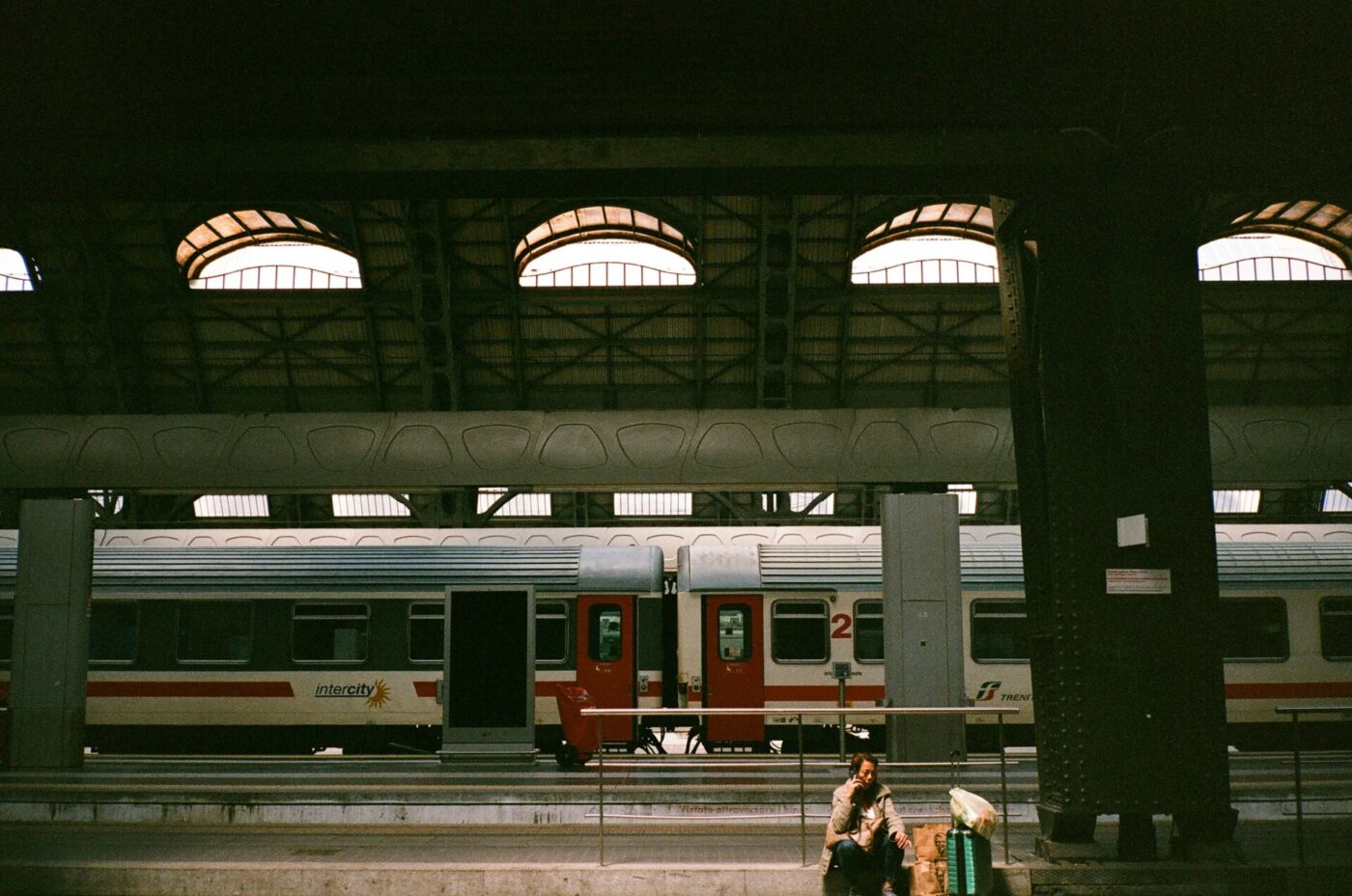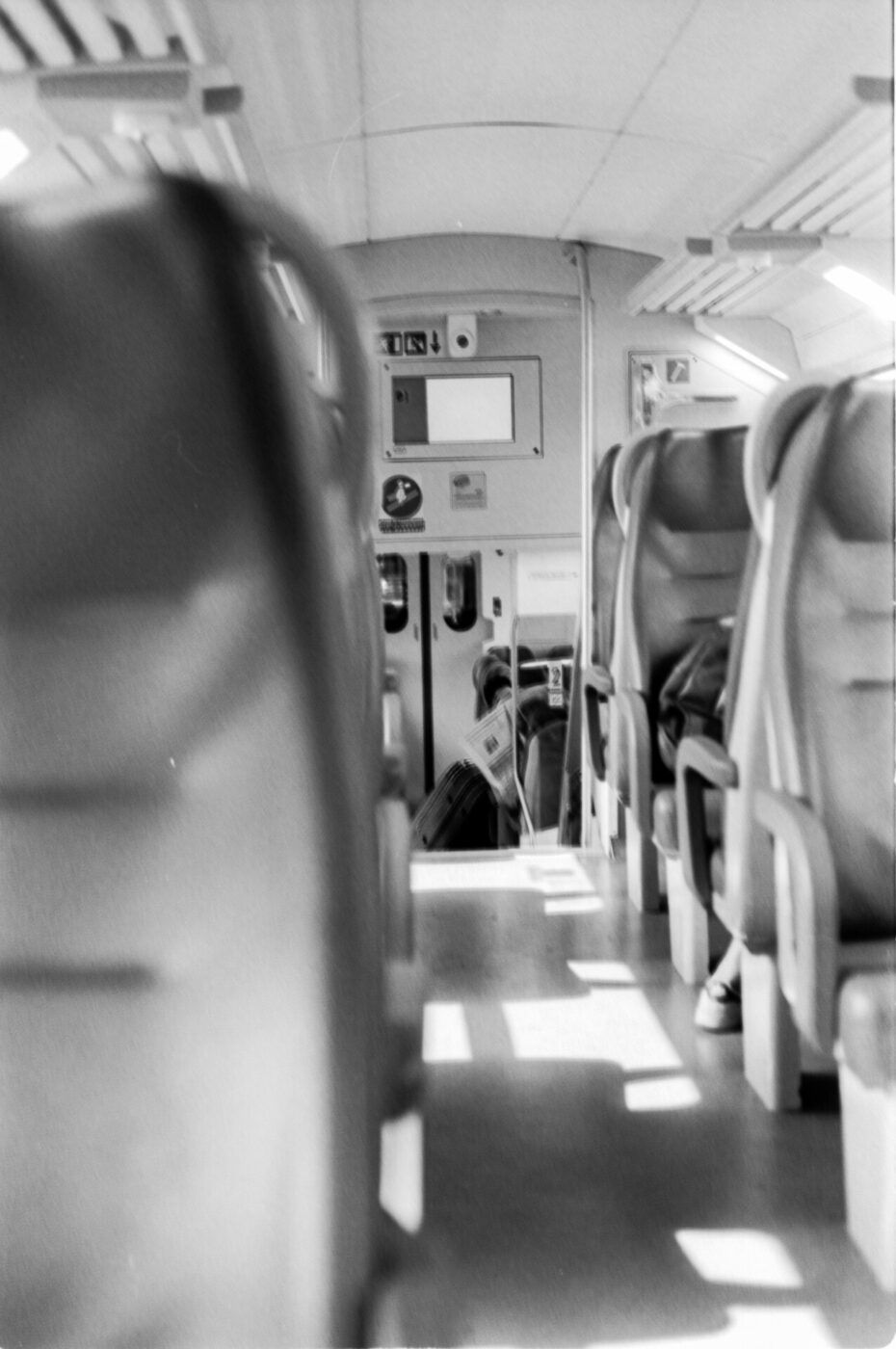Everyone remembers their first time. I was 10 years old. It was a hot, heady summer in Rome. My mum, in her usual fashion, had devised some eccentric family holiday encompassing sightseeing in Rome and sunbathing on the Amalfi Coast without thinking about the logistics. And so we all sauntered into Roma Termini at 5 PM to find that there was but one train headed to Naples and it would take three hours. It was 40 degrees outside and pushing 50 inside, and we barely managed to nab a few seats in one of the cabins. At first we thought it was by chance, yet quickly the rule became apparent: women in the seats, men in the corridor. And even though we didn’t speak a word of Italian, that three-hour train journey turned into a party–with gossip, shared snacks, and train wine for the grown-ups.
In the following two decades, I have fallen more and more in love with the Italian rail system. Like every relationship, there are days when I absolutely hate it, like when “il ritardo” (“delayed by”) reads 220 minutes, or when the ticket machine takes a lifetime to load, or when the train suddenly gives up in Poggibonsi when I am meant to be in Florence. But like every meaningful relationship, forgiveness is key.
And so I write this letter of my love for… trains. They have facilitated my love for Italy, and so I guess that the two walk hand in hand. Were it not for the Italian rail infrastructure, I wouldn’t have seen a fraction of Italy that I have. The incredible vineyard of Josko Gravner on the border with Slovenia that I’ve always wanted to visit? Simply take the train from Venice to Gorizia, and I’m there. Craving the baccalà alla Livornese from the namesake seaside city? Leaving Florence now, see you in just over an hour. Feeling grim about a cold January in Turin? I’ll be in Puglia by nightfall.
There is a certain efficiency to the Italian rail network that defies expectations. I mean, does anyone really think that Italian trains can run on time, given that Italians are infamous for their “meglio tardi che mai” (“better late than never”) philosophy? Yet it still remains relatively rare that the high-speed lines are late, unless an inexorable accident has happened. This is why I always put my trust in the trains rather than resort to driving down an Autostrada. I mean, who wants to deal with the endless traffic just to get out of a city and the countless (and expensive) toll stops, let alone the stress of Italian motorway rules (or lack thereof)?
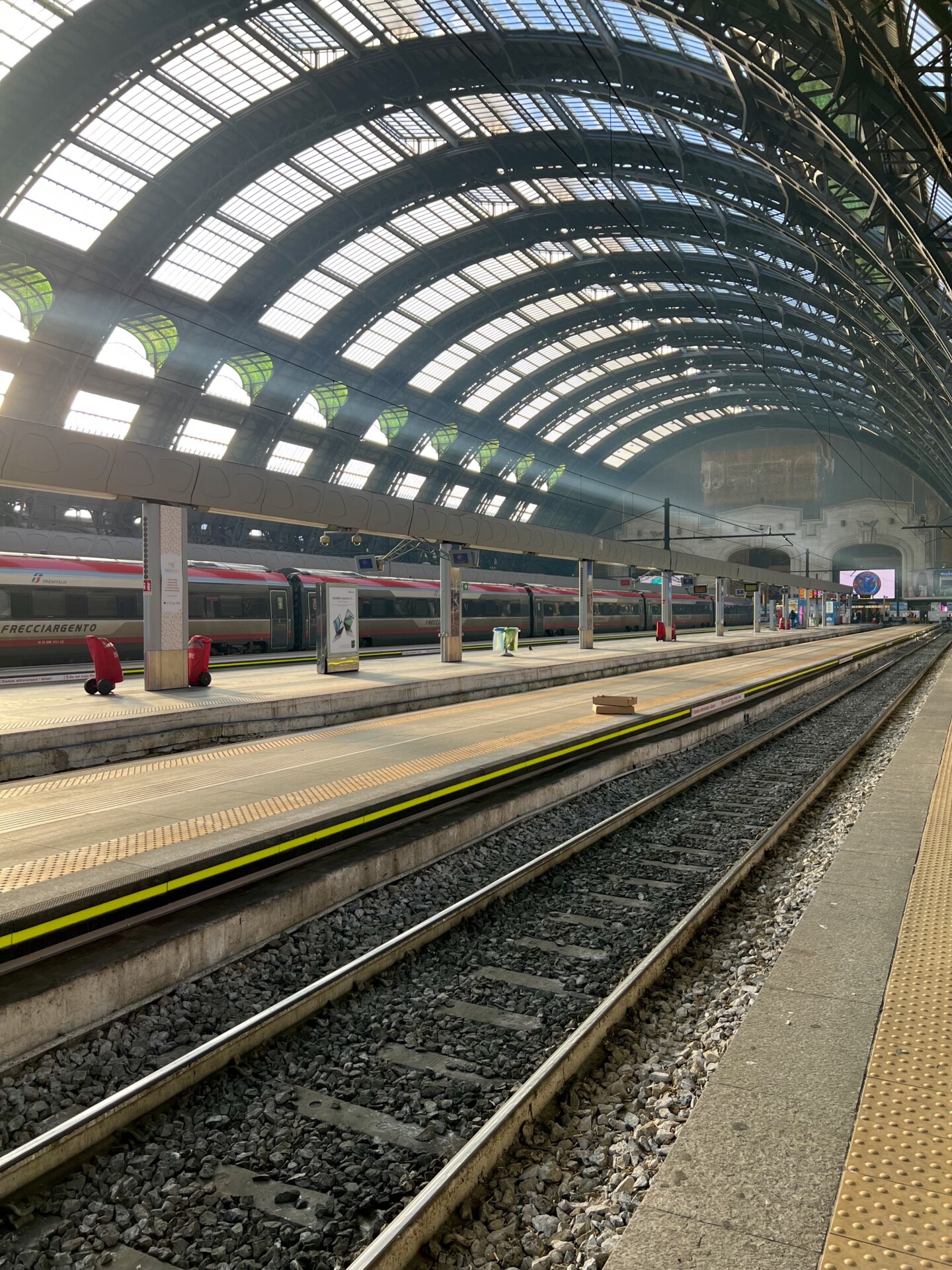
Enter a major train station and you can’t help but get this feeling that you are going somewhere. This sentiment is accentuated by the sleek silhouette of the Freccia (or Italo, if that be your preference), and the refined interiors. Pro-tip: for the cost of a coffee or two you can upgrade to Club and get the luxury of extra space, a quieter atmosphere, and snacks(!). Now don’t get your hopes up, there won’t be Franciacorta on board, but at least some form of white wine and the infamous “dolce o salato” (“sweet or salty”) that generally means taralli or some strange sweet biscuits. This aside, even if you slum it, the great pleasure is the Alta Velocità; that incredible network that extends the length of Italy, travels up to 400 km per hour, and manages to stop at every city the casual tourist might want to visit (I must confess that I once did breakfast in Venice, lunch at Trattoria Sostanza in Florence, and dinner at Armando al Pantheon in Rome). For what’s so incredible about the Alta Velocità network is that it was so precisely designed to stop between the major cities in Italy that it feels almost seamless. Turin to Milan to Bologna to Florence to Rome? And fast enough that I don’t even have time to bash out the article I’m attempting to complete–though this might potentially be because the changing landscape is so enthralling that I forget about the work in front of me.
Though, as a perpetual people watcher, I am also inevitably distracted by those whom I encounter on these cross-Italy journeys. Of course, in the summer months, the lines between the major tourist hotspots are crammed with sightseers of all nationalities; their luggage blocking the aisles and their incessant chatter impossible to block out. But, in the colder months, you get a true glimpse of the local regional differences that we so often joke about. Boarding in Turin or Milan really does mean men in smart suits with eyes glued to their laptops–no matter how hard you try to catch their eyes. By the time you reach Emilia Romagna or Tuscany, you’re more likely to be accompanied by well-dressed and reserved pensioners, perhaps on their way to visit children and grandchildren for the day, but who are equally happy to chat with you for the duration of their short journey. And well, by the time you head south of Rome… what do I say. Forget work and just gab with whoever is next to you, because they have no intention of working either. More often than not, you can tell the region you are traveling through by the snacks that are brought onboard at each stop. Board a train in Rome and you’ll certainly see to-go trays of pizza al taglio, while travelers from Catania munch upon giant arancini.
The development of the Alta Velocità network focused (quite naturally) on connecting the capital to the North, with the Direttissima Rome-Florence route opening in 1977. Unsurprisingly, Rome to Milan (the business capital) was next, in 1989. As such, the infrastructure in the south has been slow to follow suit. This means that beyond Naples and Bari, the only option for years has been to resort to the Regionale system (which, newsflash, takes forever). Thankfully, things are in the process of changing, and, since 2020, there are Freccia trains that run to Reggio Calabria as well as ones that board (yes, board) ferries, to be taken across the Strait of Messina to Sicilian destinations like Palermo and Catania.
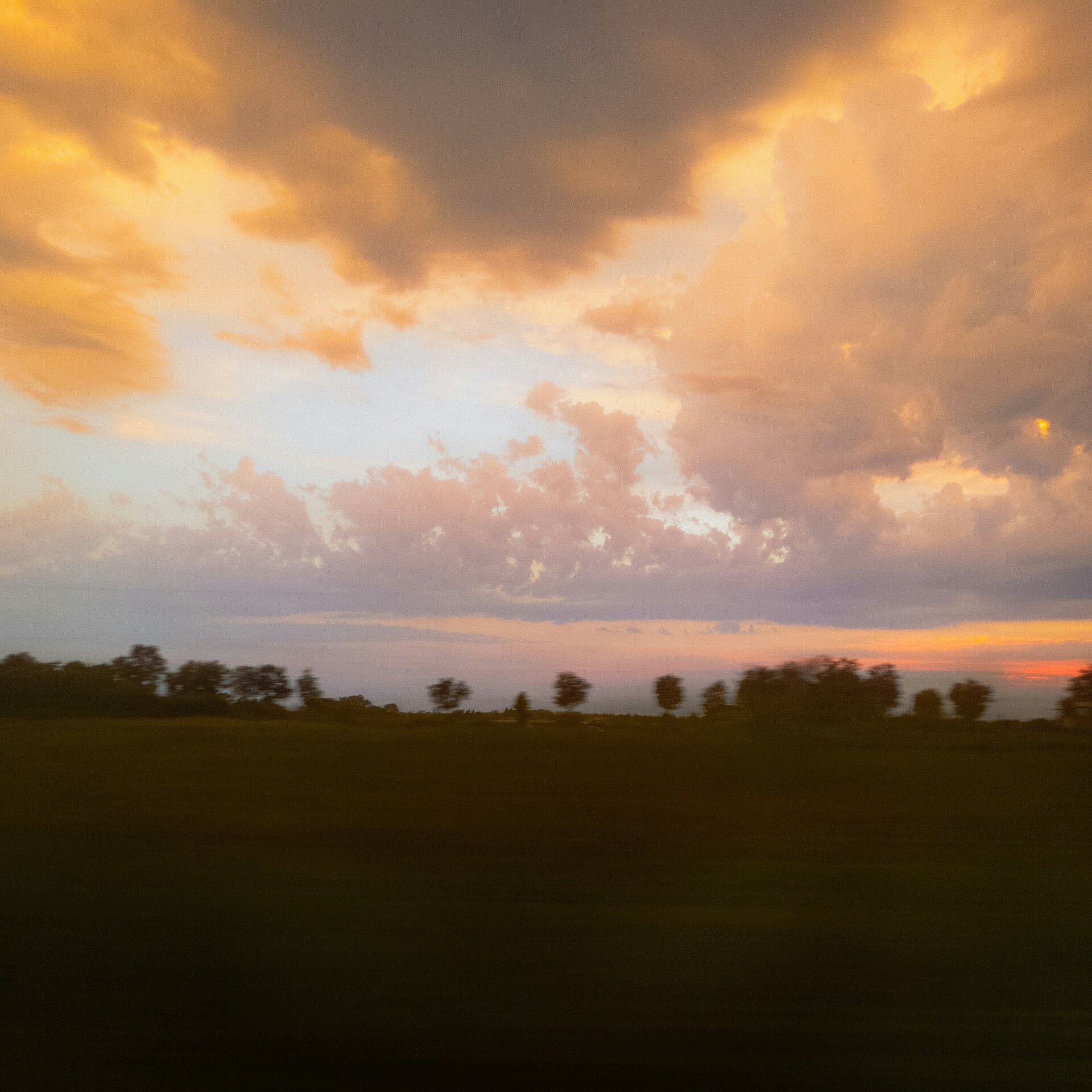
View from the train
In Campania, the Regionale system is a law unto its own. Take, for instance, the Circumvesuviana that, surprise surprise, navigates around Mount Vesuvius. I first boarded this train that fateful evening back when I was 10 years old, and I could swear the trains haven’t been updated since. Always overcrowded, no air-conditioning, and someone playing the accordion for tips. Yet, on this terrible train ride, there is always a sense of open-heartedness from the Campanians, such as when we were young and a group of locals took a shine to my sister, offering her slices of their pizza and saying “she, she looks Italian” as justification for their generosity.
The Alta Velocità and the Regionale lines are interconnected entities; a little like the difference between arteries and veins. If the Regionale is the latter, it goes without saying that it is what keeps all the parts functioning, connecting the smaller towns and villages like lifeblood. These Regionale lines are a means to travel to the lesser-known, off-piste settings that everyone dreams about in Italy but few have the gumption to seek out. Stand in a major train station, look up at the departure board, and you’ll feel the thrill of seeing all of the places that you could head to. Granted, these will not be world-renowned places. Instead, they will be the sort of places that you may have to walk an hour from the station to reach your destination, but they will always be worth the effort. I can cite (from Venice) Udine, (from Bologna) Ravenna, and (from Florence) Cortona, Spello, and Pietrasanta among the top, despite countless other locations that few will have heard of. For this is the point of the Regionale lines; they allow you to get to the essence of each region, and that is key. Yes, they may chug along (unless you hop aboard a Regionale Veloce), but there is a strange joy to being among the handful of people who get off at a station in the middle of nowhere.
I could finish this love letter with countless anecdotes. With more disasters, more complaints, more meet-cutes… However, I’ll refrain and instead cut to the chase. Where would I be without TrenItalia? Perhaps stranded at a remote station in the depths of Umbria, or stuck in Venice, thinking that the city gave me a good enough insight into the rest of Veneto. Instead, the countless trains I have boarded and all those tickets I’ve validated have given me an insight into off-the-beaten sides of Italy that would otherwise have been impossible to get to know. And I will always love the Italian Rail System for that.
